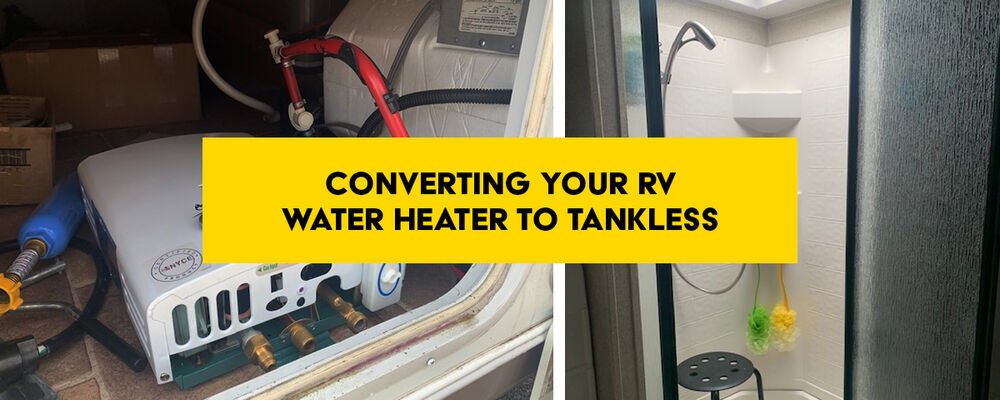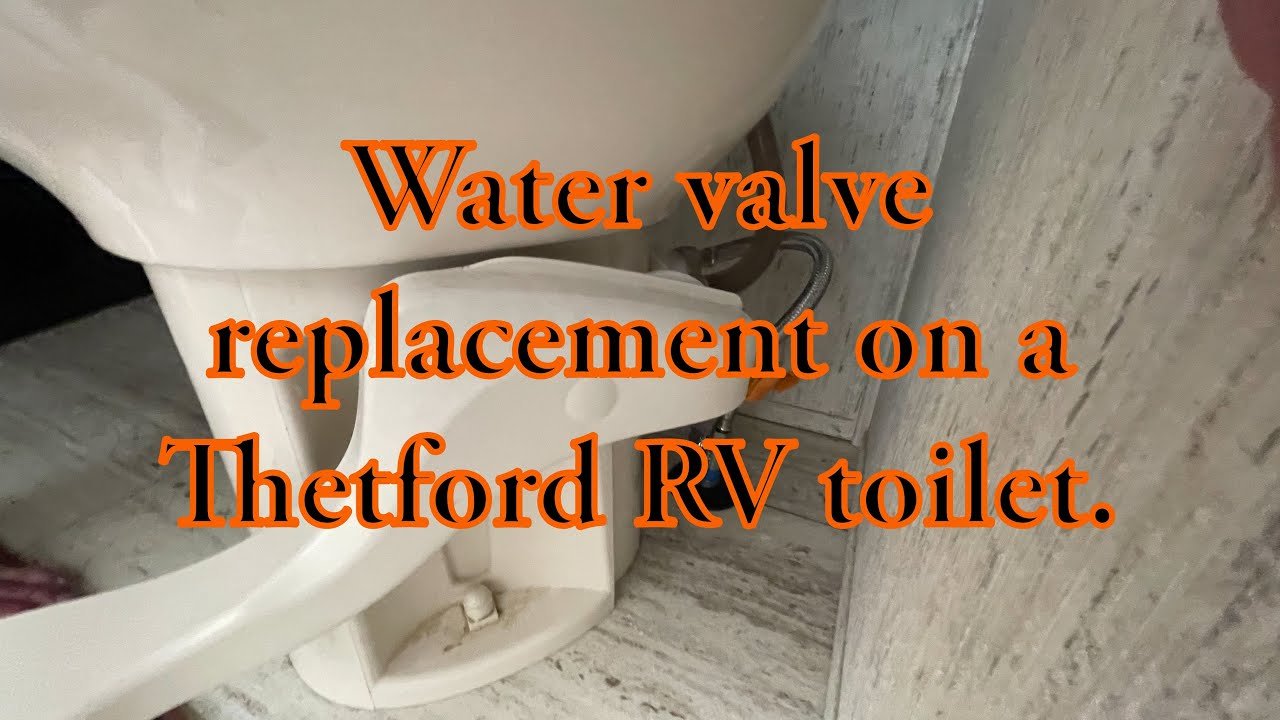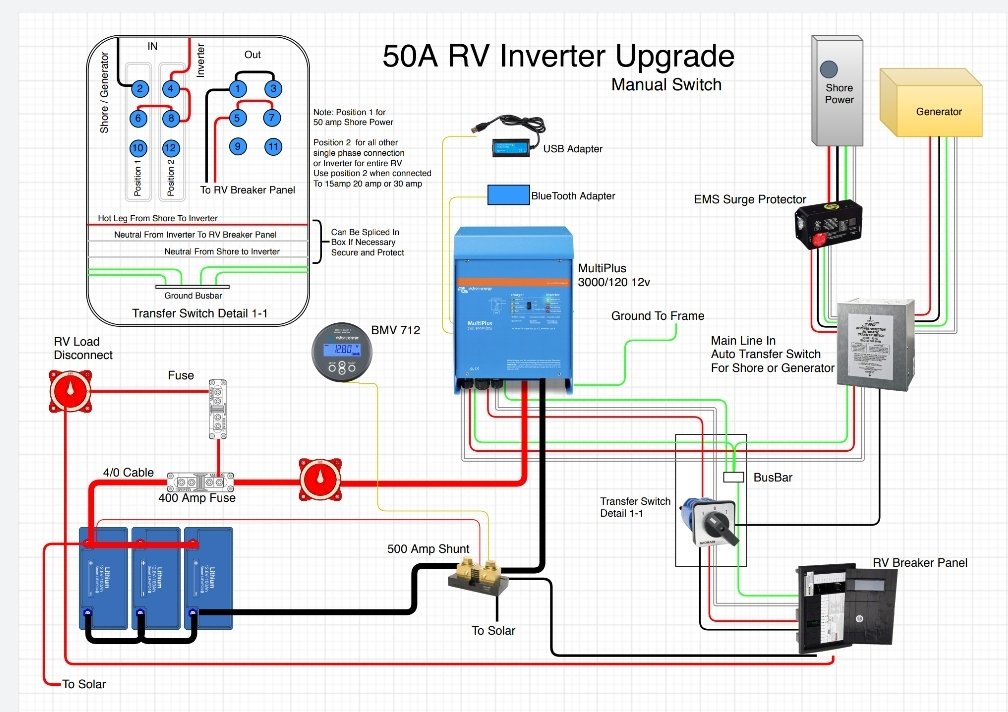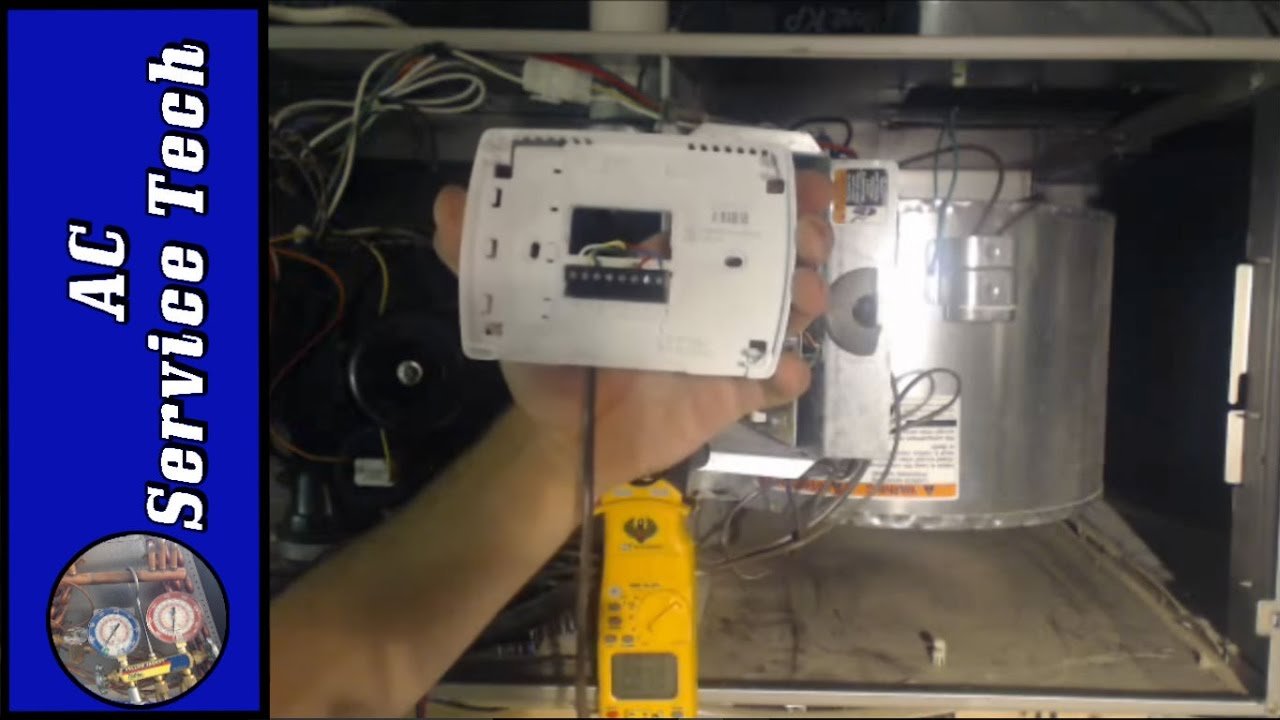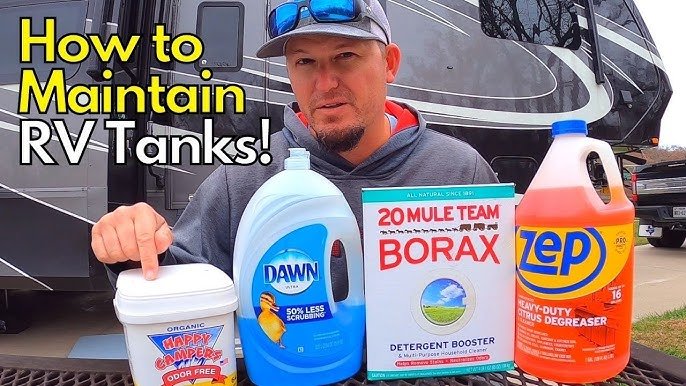RV tankless water heater conversion can transform your camping experience. Imagine never running out of hot water during your trips.
Switching to a tankless water heater in your RV offers numerous advantages. Traditional water heaters often limit hot water supply, causing inconvenience. A tankless system provides a continuous flow of hot water, ensuring comfort. It’s more efficient, saving energy and reducing costs.
Moreover, tankless heaters are compact, freeing up valuable space in your RV. This upgrade can enhance your overall travel experience, making it more enjoyable and stress-free. In the following sections, you’ll discover the benefits, steps, and tips for converting to a tankless water heater in your RV. This guide will help you make an informed decision and enjoy endless hot water on the road.
Benefits Of Tankless Water Heaters
Are you considering converting your RV to a tankless water heater? This can be a smart move for many reasons. Let’s explore the key benefits of tankless water heaters and why they are a great choice for your RV.
Energy Savings
Tankless water heaters can save you money on energy bills. They heat water only when you need it, unlike traditional water heaters that keep a tank of water hot all the time. This on-demand heating reduces energy waste.
Here’s a quick comparison:
| Traditional Water Heater | Tankless Water Heater |
|---|---|
| Heats water constantly | Heats water on demand |
| High energy consumption | Lower energy consumption |
| Higher energy bills | Lower energy bills |
Unlimited Hot Water
With a tankless water heater, you never run out of hot water. This is especially useful in an RV where space and resources are limited. No more waiting for a tank to refill and reheat.
Key advantages include:
- Continuous hot water supply
- No waiting time
- Perfect for families or group travel
Switching to a tankless water heater can make your RV trips more comfortable and efficient. Experience the freedom of energy savings and unlimited hot water on the road.
Choosing The Right Tankless Water Heater
Converting your RV to a tankless water heater can be a wise decision. But, it’s crucial to choose the right one. This guide will help you understand key factors such as size and capacity and fuel type options.
Size And Capacity
The size and capacity of a tankless water heater are vital. This ensures you have enough hot water for your needs. Here’s how to choose:
- Flow Rate: Measure in gallons per minute (GPM). Choose a heater with a GPM that matches your usage.
- Usage: For a single shower, a 2-3 GPM heater is sufficient. For multiple fixtures, consider a higher GPM.
- Space: Ensure the heater fits in your RV space. Measure the area before purchasing.
Using the right size and capacity ensures efficiency and comfort. Consider your daily usage patterns carefully.
Fuel Type Options
Choosing the right fuel type is another key factor. Tankless water heaters typically use propane, natural gas, or electricity.
| Fuel Type | Pros | Cons |
|---|---|---|
| Propane | Efficient, portable, ideal for RVs | Requires propane supply, higher cost |
| Natural Gas | Cheaper fuel, high output | Requires gas line, less portable |
| Electric | Easy installation, no fuel storage | Higher operating cost, lower output |
Propane is often the best choice for RVs due to its portability and efficiency. Natural gas offers high output but is less portable. Electric heaters are easy to install but can have higher costs.
Consider your fuel availability and budget when making your choice. Each type has its advantages and drawbacks.
Installation Process
Converting your RV to a tankless water heater can be a valuable upgrade. It ensures a constant supply of hot water while saving space. The installation process might seem daunting, but with the right guidance, it’s manageable. Follow these steps to ensure a smooth installation.
Preparation Steps
Before starting, turn off the power and water supply to your RV. Drain the existing water heater to avoid any spills. Ensure you have a clear workspace around the heater. Measure the space where you plan to install the tankless water heater. Check the manufacturer’s instructions for any specific requirements.
Tools And Materials Needed
Gather all the necessary tools and materials before you begin. You will need a wrench, screwdriver, and pipe cutter. Additional items include Teflon tape, pipe fittings, and possibly an adapter kit. Ensure you have the new tankless water heater ready for installation. A voltage tester is also helpful to ensure safety during electrical connections.
Step-by-step Conversion Guide
Converting your RV to a tankless water heater can enhance your comfort and efficiency. This guide will walk you through the steps to ensure a smooth transition.
Removing The Old Heater
Start by turning off the water supply to your RV. Then, disconnect the power source to avoid any electrical hazards.
- Drain the existing water heater. Open the drain valve and let the water flow out.
- Disconnect the water lines. Use a wrench to carefully detach the hot and cold water lines.
- Remove the mounting screws. Use a screwdriver to unscrew the heater from its mount.
- Carefully pull out the old heater. Dispose of it properly.
Installing The New Unit
With the old heater removed, it’s time to install the new tankless water heater.
- Position the new unit. Place it in the same location as the old heater.
- Secure the unit. Use mounting screws to attach it firmly.
- Connect the water lines. Attach the hot and cold water lines to the new unit.
- Install the venting system. Ensure proper ventilation as per the manufacturer’s guidelines.
- Connect the power supply. Reconnect the electrical wiring or propane supply.
- Test the unit. Turn on the water supply and power. Check for leaks and proper operation.
Once everything is connected, your new tankless water heater should be ready to use.
Safety Considerations
Converting your RV to a tankless water heater can be a smart move. It saves space and provides endless hot water. But, it’s important to consider safety. Here, we will discuss key safety aspects. Focus on gas and electrical safety and proper ventilation.
Gas And Electrical Safety
Both gas and electrical safety are crucial. If you use a gas-powered heater, check for gas leaks. Use a gas leak detector. Inspect connections regularly. A professional should install the heater. This ensures all connections meet safety standards.
For electrical models, ensure proper wiring. Check the RV’s electrical system. It must handle the new heater’s load. Improper wiring can cause fires. Always use a certified electrician for installation. Never try to do it yourself.
Proper Ventilation
Proper ventilation is vital. Tankless water heaters produce exhaust gases. Without proper ventilation, these gases can be harmful. Install vents as per the manufacturer’s guidelines. This ensures safe operation.
Keep the vents clean. Blocked vents can cause carbon monoxide buildup. Regularly check for blockages. Proper ventilation keeps you safe and ensures the heater works efficiently.
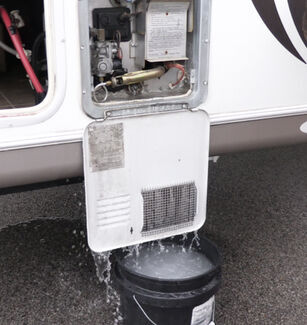
Credit: www.etrailer.com
Maintenance Tips
Keeping your RV tankless water heater in good condition is essential. Proper maintenance ensures efficiency and longevity. Follow these maintenance tips to keep your water heater running smoothly.
Regular Cleaning
Regular cleaning is crucial. Clean the exterior and interior components. Dust and debris can cause issues. Use a soft brush for the exterior.
For the interior, follow the manufacturer’s instructions. This often includes flushing the system. Flushing removes mineral buildup. This buildup can affect performance and efficiency.
Cleaning Steps:
- Turn off the power and water supply.
- Drain any water from the heater.
- Use a descaling solution to clean internal parts.
- Rinse thoroughly to remove any residue.
- Refill the system and restore power.
Troubleshooting Common Issues
Even with regular maintenance, issues may arise. Knowing how to troubleshoot common problems can save time and money.
| Issue | Possible Cause | Solution |
|---|---|---|
| No hot water | Power supply issue | Check power connections and reset the system |
| Fluctuating water temperature | Mineral buildup | Flush the system to remove buildup |
| Strange noises | Air in the system | Bleed the air from the lines |
Troubleshooting Tips:
- Always consult the user manual.
- Ensure the water pressure is adequate.
- Check for error codes on the display.
- Contact a professional if the issue persists.
Cost Analysis
Converting your RV to a tankless water heater might seem expensive. But understanding the costs involved can help you make an informed decision. Let’s break down the costs into two main categories: initial investment and long-term savings.
Initial Investment
The first cost to consider is the initial investment. This includes the price of the tankless water heater unit, installation fees, and possible modifications to your RV’s plumbing and electrical systems. Here’s a breakdown:
| Cost Component | Estimated Price Range |
|---|---|
| Tankless Water Heater Unit | $300 – $1,200 |
| Installation Fees | $100 – $500 |
| Plumbing/Electrical Modifications | $50 – $200 |
In total, the initial investment can range between $450 and $1,900. This range depends on the type of tankless water heater and complexity of installation.
Long-term Savings
While the initial investment might be high, the long-term savings can be significant. Tankless water heaters are more efficient than traditional ones. This means lower energy bills and less water wastage. Consider the following:
- Energy Efficiency: Tankless units can be up to 34% more efficient.
- Water Savings: Hot water on demand reduces water wastage.
- Maintenance Costs: Fewer parts mean less maintenance.
Over time, these savings can add up. Here’s an estimation:
| Cost Component | Annual Savings |
|---|---|
| Energy Bills | $100 – $300 |
| Water Wastage | $50 – $150 |
| Maintenance | $20 – $50 |
In total, you can save between $170 and $500 annually. This means the initial investment can pay for itself in a few years.

Credit: www.youtube.com
User Experiences
Converting to an RV tankless water heater can be a big decision. Many users have shared their experiences to help others make an informed choice. Hearing from actual users gives a clear picture of the benefits and challenges. Below, you will find real-life testimonials and expert opinions.
Real-life Testimonials
Many RV owners have switched to tankless water heaters and shared their stories. Here are a few notable experiences:
- Jane from Florida: “The constant hot water supply has been fantastic. No more waiting for the tank to refill!”
- Mike from Texas: “Installation was straightforward. The space-saving design is a big plus for my small RV.”
- Susan from California: “I noticed a decrease in my propane usage. It’s more efficient than my old tank heater.”
Expert Opinions
Experts in RV maintenance and upgrades have also shared their insights on tankless water heaters:
- John Doe, RV Technician: “Tankless water heaters are reliable and reduce maintenance issues.”
- Jane Smith, RV Blogger: “They are perfect for long trips. The convenience of endless hot water is unmatched.”
- Mike Brown, RV Enthusiast: “Switching to a tankless system is one of the best upgrades for an RV.”

Credit: www.youtube.com
Frequently Asked Questions
What Are The Benefits Of Rv Tankless Water Heaters?
RV tankless water heaters provide instant hot water, save space, and are energy-efficient. They offer continuous hot water supply, unlike traditional heaters.
How Does An Rv Tankless Water Heater Work?
RV tankless water heaters heat water on demand using a high-powered burner. Water flows through a heat exchanger and gets heated instantly.
Is Installing An Rv Tankless Water Heater Difficult?
Installing an RV tankless water heater can be complex. It often requires professional help for proper installation and safety compliance.
How Do You Maintain An Rv Tankless Water Heater?
Regularly flush the system to remove mineral buildup. Check and clean filters, and inspect for leaks to ensure optimal performance.
Conclusion
Switching to an RV tankless water heater offers many benefits. You save space and enjoy endless hot water. Installation is straightforward with the right tools. Maintenance is minimal, which means fewer hassles on the road. This upgrade enhances your RV experience.
Happy travels and warm showers await!


